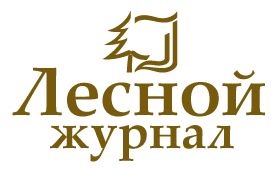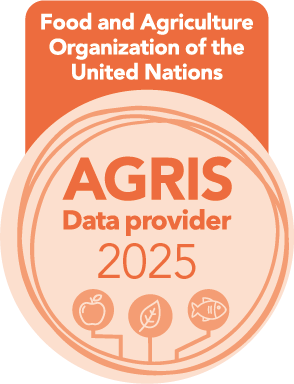

Address: Naberezhnaya Severnoy Dviny, 17, Arkhangelsk, 163002, Russian Federation, Northern (Arctic) Federal University named after M.V.Lomonosov, office 1425
Phone: +7 (8182) 21-61-18
E-mail: forest@narfu.ru
http://lesnoizhurnal.ru/en/
|
A Modified Methodology for Calculating Regional Forest Fire Hazard Scales. С. 9-24
|
 |
Kotelnikov R.V., Martynyuk А.A.
UDС
630*614.849
DOI:
10.37482/0536-1036-2025-1-9-24
Abstract
Weather conditions are one of the most important factors affecting forest fire hazard. In Russia, it is the indices characterizing the fire hazard in forests depending on weather conditions that are traditionally used to regulate the work of forest fire services. In particular, the fire hazard class, the calculation method for which (based on the developments by V.G. Nesterov) has been approved by the order of the Federal Forestry Agency, is used to calculate the frequency of aviation patrols of forests. Taking into account the different densities of weather stations in different years, several modifications of this method have been developed, such as PV-1, PV-2, PVG, but only the Nesterov method is officially approved, despite a number of disadvantages. The accumulation of large volumes of structured data, as well as the development of information technologies, makes it possible to optimize existing approaches to calculating the boundary values of a complex fire hazard index in forests and, for the first time, to perform detailed calculations for all regions of the Russian Federation. Thus, prerequisites have arisen in Russia for updating the regulatory legal framework in this area. The proposed modified methodology is based on the classical principle of assessing the boundaries of classes in the fire hazard scale, corresponding to the proportion of forest fires that occur: 5, 20, 45 and 70 %. At the same time, the fundamental new feature is the choice (based on a numerical criterion) of the methodology that is most suitable for a specific territory. In this case, it is proposed to use the Nesterov and PVG method in a modified version (with temperature and dew point values for yesterday with updated precipitation data: day/ night). This paper substantiates that such changes will not significantly affect the adequacy of the index, while allowing calculations to be made for the morning of the current day, which is necessary for practical application. Another important feature has been the transition to a weighted average calculation of indices. The subject of the Russian Federation as a whole has been selected as a unit of calculation for regions with small forest areas. Large regions have been divided along the boundaries of forest areas. For the subjects of the Russian Federation with pronounced intra-seasonal fluctuations in fire frequency index, the scales have been calculated separately for characteristic periods. To visualize the scales obtained during the study, a special interactive web service has been developed, which has significantly simplified the process of monitoring and interpreting the results. The proposed scales can be used to improve the regulatory framework in the field of forest fire protection.
Keywordsforest fires, fire hazard, complex index, modified methodology, regional scales
For citation
Kotelnikov R.V., Martynyuk А.A. A Modified Methodology for Calculating Regional Forest Fire Hazard Scales. Lesnoy Zhurnal = Russian Forestry Journal, 2025, no. 1, pp. 9–24. (In Russ.). https://doi.org/10.37482/0536-1036-2025-1-9-24
References
- Gubenko I.M., Rubinshtejn K.G. Comparative Analysis of Methods for Calculating Fire Hazard Indices. Trudy Gidrometeorologicheskogo nauchno-issledovatel’skogo tsentra Rossijskoj Federatsii = Proceedings of Hydrometcentre of Russia, 2012, no. 347, pp. 180–193. (In Russ.).
- Ivanov V.A., Goroshko A.A., Baksheeva E.O., Golovina A.N., Morozov A.S. Regional Fire Hazard Scales Based on Weather Conditions for Forests in the Amur Region. Khvoinye boreal’noi zony = Conifers of the Boreal Area, 2020, vol. XXXVIII, no. 1–2, pp. 34–42. (In Russ.).
- Kotelnikov R.V., Loupian E.A. Features of Remotely Estimated Distributions of Forest Fire Areas for Territories with Different Levels of Fire Protection. Sovremennye problem distantsionnogo zondirovaniya Zemli iz kosmosa = Current Problems in Remote Sensing of the Earth from Space, 2022, vol. 19, no. 4, pp. 75–87. (In Russ.). https://doi.org/10.21046/2070-7401-2022-19-4-75-87
- Kotelnikov R.V., Chugaev A.N. Comparative Estimation of the Quality of Fire Danger Indexes in Forests. Sibirskij lesnoj zhurnal = Siberian Journal of Forest Science, 2023, no. 6, pp. 32–38. (In Russ.). http:dx//doi.org/10.15372/SJFS20230604
- Plotnikova A.S. Scale of Natural Fire Danger of Forest Ecosystems of Melekhov I.S. Overview of Modern Russian Methodological Approaches. Voprosy lesnoj nauki = Forest Science Issues, 2021, vol. 4, no. 2, art. no. 83. (In Russ.). https://doi.org/10.31509/2658-607x-202142-2
- Kotelnikov R.V., Chugaev A.N. Certificate of State Registration of a Computer Program 2023668649 RF. Comparison of Fire Hazard Assessment Methods in Forests, Depending on Weather Conditions, 2023. (In Russ.).
- Sofronova T.M., Volokitina A.V., Sofronov M.A. Improving the Assessment of Fire Hazard Based on Weather Conditions in the Mountain Forests of the Southern Baikal Region: Monograph. Krasnoyarsk, Sukachev Institute of Forest (Siberian Branch of the Russian Academy of Sciences), Krasnoyarsk State Pedagogical University named after V.P. Astafyev, 2007. 236 p. (In Russ.).
- Buryak L.V., Kukavskaya E.A., Ivanov V.A., Malykh O.F., Kotelnikov R.V. Assessment of Fire Hazard and Its Dynamics in Forest Areas of Siberia. Contemporary Problems of Ecology, 2021, vol. 14, pp. 803–814. https://doi.org/10.1134/S1995425521070040
- Ziel R.H., Bieniek P.A., Bhatt U.S., Strader H., Rupp T.S., York A. A Comparison of Fire Weather Indices with MODIS Fire Days for the Natural Regions of Alaska. Forests, 2020, vol.11, no 5, art. no. 516. https://doi.org/10.3390/f11050516
- Bartalev S.A., Stytsenko F.V. Assessment of Forest-Stand Destruction by Fires Based on Remote-Sensing Data on the Seasonal Distribution of Burned Areas. Contemporary Problems of Ecology, 2021, vol. 14, pp. 711–716. https://doi.org/10.1134/S1995425521070027
- Hayasaka H. Fire Weather Conditions in Boreal and Polar Regions in 2002–2021. Atmosphere, 2022, vol. 13, no. 7, art. no. 1117. https://doi.org/10.3390/atmos13071117
- Kotelnikov R.V., Chugaev A.N. Efficiency Evaluation of the Weighted Mean Calculation of the Forest Fire Hazard Class. IOP Conference Series: Earth and Environmental Science, 2021. vol. 875, art. no. 012064. https://doi.org/10.1088/1755-1315/875/1/012064
- Kotel’nikov R.V., Lupyan E.A., Bartalev S.A., Ershov D.V. Space Monitoring of Forest Fires: History of the Creation and Development of ISDM-Rosleskhoz. Contemporary Problems of Ecology, 2020, vol. 13, pp. 795–802. https://doi.org/10.1134/S1995425520070045
- Krylov A., McCarty J., Potapov P., Loboda T., Tyukavina A., Turubanova S., Hansen M.C. Remote Sensing Estimates of Stand-Replacement Fires in Russia, 2002–2011. Environmental Research Letters, 2014, vol. 9, art. no. 105007. https://doi.org/10.1088/1748-9326/9/10/105007
- Pezzatti G.B., De Angelis A., Bekar İ., Ricotta C., Bajocco S., Conedera M. Complementing Daily Fire-Danger Assessment Using a Novel Metric Based on Burnt Area Ranking. Agricultural and Forest Meteorology, 2020, vol. 295, art. no. 108172. https://doi.org/10.1016/j.agrformet.2020.108172
- Previdi M., Smith K.L., Polvani L.M. Arctic Amplification of Climate Change: a Review of Underlying Mechanisms. Environmental Research Letters, 2021, vol. 16, art. no. 093003. https://doi.org/10.1088/1748-9326/ac1c29
- Srock A.F., Charney J.J., Potter B.E., Goodrick S.L. The Hot-Dry-Windy Index: A New Fireweather Index. Atmosphere, 2018, vol. 9, no. 7, art. no. 279. https://doi.org/10.3390/atmos9070279
- Šturm T., Fernandes P.M., Šumrada R. The Canadian Fire Weather Index System and Wildfire Activity in the Karst Forest Management Area, Slovenia. European Journal of Forest Research, 2012, vol. 131, pp. 829–834. https://doi.org/10.1007/s10342-011-0556-7
- Torres-Rojo J.M. Index for the Estimation of the Occurrence of Forest Fires in Large Areas = Índice para la Estimación de Ocurrencia de Incendios Forestales en Superficies Extensas. Revista Chapingo Serie Ciencias Forestales y del Ambiente, 2020, vol. XXVI, iss. 3, pp. 433–449. (In Span. аnd Eng.) https://doi.org/10.5154/r.rchscfa.2019.11.082
A Modified Methodology for Calculating Regional Forest Fire Hazard Scales. С. 9-24
|
Make a Submission


Lesnoy Zhurnal (Russian Forestry Journal) was awarded the "Seal of Recognition for Active Data Provider of the Year 2025"

|







